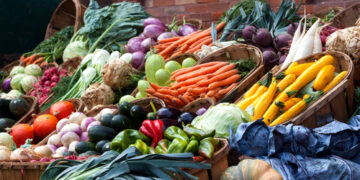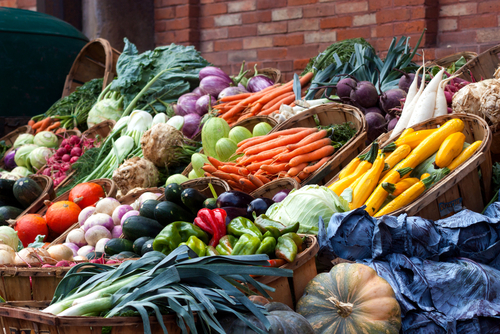When Did Eating Get So Complicated?
Somewhere along the way, we stopped recognizing what food really looks like. It now comes wrapped in foil, dyed neon colors, and stamped with expiration dates that stretch for years. Food became a product—engineered, marketed, preserved. And while convenience has its place, it’s come at a cost: our connection to real nourishment.
Whole foods—unprocessed, untouched, and as close to the earth as they come—offer us a way back. They don’t need flashy labels or nutrition claims. Their benefits are built in, not added later. They’re the quiet heroes of a balanced plate, and when we return to them, we often find that our bodies respond in kind.
Ad Banner #1
Placeholder for the first ad.
What Is a Whole Food, Anyway?
Let’s strip it down. Whole foods are ingredients in their natural or near-natural form. A sweet potato. A handful of almonds. A bunch of kale. Lentils, apples, brown rice, a perfectly ripe avocado. They haven’t been bleached, puffed, dyed, or drowned in sugar and salt. They’re the kind of food your body recognizes—and knows exactly how to use.
Processed foods, on the other hand, are built for shelf life and speed. They’re often stripped of fiber and essential nutrients, then re-fortified with isolated vitamins or artificial additives to fill the gaps. You might feel full after eating them, but it’s often a fleeting kind of fullness. Your body still craves the real thing.
Nature Knows the Formula
One of the most beautiful things about whole foods is that they come perfectly packaged. A berry isn’t just sugar—it’s fiber, antioxidants, and water too. A bean isn’t just protein—it’s also rich in minerals, slow-burning carbs, and compounds that support your gut.
These are foods that speak your body’s language. When you eat closer to nature, you’re not just avoiding what’s harmful—you’re actively nourishing your cells with the tools they need to repair, build, and thrive.
Not a Diet. A Return.
Whole food eating isn’t a trend. It’s not a detox or a cleanse or a label you have to wear. It’s a return to something quieter and more grounded. It’s peeling a carrot, not scanning a barcode. It’s making soup from scratch and knowing every ingredient in your bowl. It’s trusting your body to guide you when it’s fed well.
And no, it doesn’t mean giving up flavor or pleasure. Quite the opposite. When you start eating whole foods regularly, your taste buds wake up. You begin to notice how naturally sweet a roasted beet can be, or how satisfying a well-seasoned grain bowl feels. You don’t need fake cheese dust or syrupy coatings to feel satisfied. Real food tastes like it was meant to nourish.
Ad Banner #2
Placeholder for the second ad.
How to Bring It Home (Without Overhauling Your Life)
You don’t have to throw out your pantry or spend hours in the kitchen to eat closer to nature. Start small. Add a handful of greens to your breakfast. Cook a pot of lentils for the week. Try one dinner without anything coming out of a box. Let each meal be a gentle nudge in the right direction.
Here’s the secret: the more whole foods you eat, the more your body starts to want them. Your energy evens out. Your digestion improves. That 3 p.m. crash? It starts to fade. And slowly, those hyper-processed options stop calling your name as loudly.
It’s not about being perfect—it’s about being intentional. Choosing what feels real over what’s just easy.
A Note on Balance
Whole food eating isn’t about moral purity. You’re not “bad” for grabbing a packaged snack or ordering takeout. But by shifting the majority of your meals to whole, natural ingredients, you create a foundation of health that’s strong enough to flex when life gets busy.
It’s also about tuning in. Some people feel amazing on a plate full of grains and greens. Others need more protein, more fat, or different combinations altogether. That’s the beauty of real food—it’s versatile, adaptable, and intuitive once you start listening.
The Real Win
At the end of the day, whole foods aren’t just about nutrients—they’re about nourishment. Not just physical, but emotional. There’s something deeply satisfying about preparing a simple, real meal. About knowing where your food came from, and honoring what it gives your body in return.
Start with what you have. Maybe it’s a single piece of fruit added to breakfast, or a grain you’ve never cooked before simmering on your stove. Let curiosity guide you. Let the act of choosing something closer to the earth remind you of how good real food can feel.



























